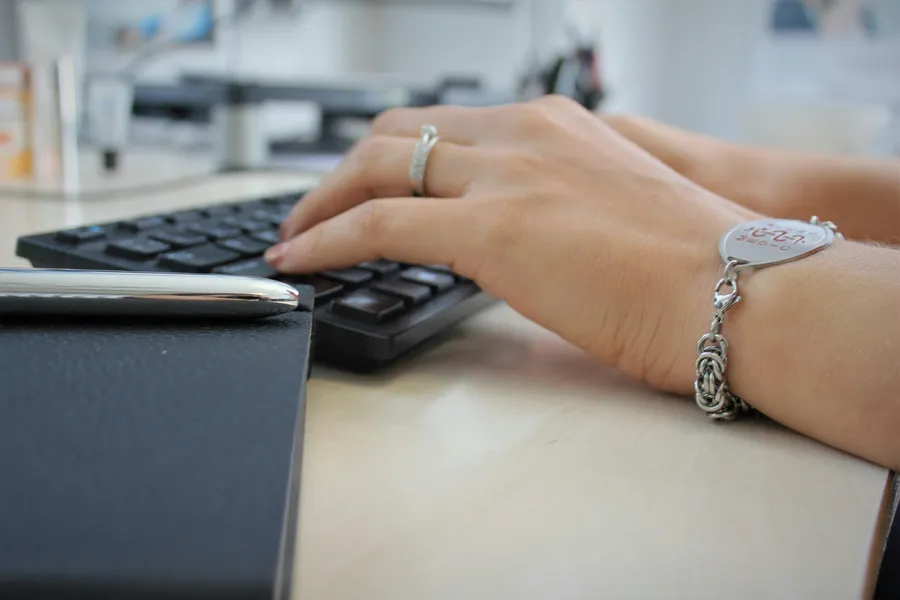How Ticket Tracking + Digital Service Catalogues Transform Campus Facilities & Ancillary Services
From broken projectors to event setups, Facilities and Ancillary Services teams are under pressure to do more with less. Here’s how a standardized Ticket Tracker and Digital Service Catalogue — paired with QR code-enabled assets — brings accuracy, transparency, and speed to campus operations.

Universities and colleges are vibrant ecosystems. From bustling libraries and modern labs to cafeterias, student centers, and residence halls, each space has to function smoothly for learning and community life to thrive. Behind the scenes, Facilities Management and Ancillary Services teams carry the responsibility of keeping it all running — and they’re under growing pressure to do more with less.
The challenge? Requests often arrive through scattered channels — phone calls, emails, or hallway conversations — making it difficult to track, prioritize, and measure performance. That’s where the New Wave Workspace Ticket Tracker and Digital Service Catalogue come in.
Together, they provide a standardized workflow that not only collects requests but also guides them through defined phases, from submission to resolution, with full transparency. Even better, students, staff, and faculty can leverage their mobile phone cameras to attach photos or evidence directly to a request — ensuring facilities teams see the issue exactly as it is reported. Whether it’s a broken chair, a spill in a lab, or an event setup request, evidence makes communication clearer and resolution faster.
And here’s the key advantage: these tools can be deployed stand-alone or tied directly to a bookable resource such as a meeting room, event space, desk, parking spot, or even a smart locker.
The Power of QR Codes for Campus Assets
To further eliminate ambiguity, universities can assign QR codes to physical assets or spaces. Scanning a QR code with a mobile phone immediately pulls up the correct ticketing form linked to that asset — no guesswork, no miscoding.
- A student scanning a QR code on a broken projector submits a ticket automatically tied to that room and device.
- A staff member scanning a QR code on a vending machine reports an issue that goes straight to the responsible vendor.
- Facilities teams scanning a QR code on a smart locker can check history, maintenance records, and pending requests in seconds.
This QR code integration ensures accuracy, streamlines reporting, and provides enhanced control over campus operations by linking every request directly to a specific asset.
KPIs: Reduction in misrouted tickets, improved response accuracy, asset-level service history, faster issue-to-resolution cycles.
1) Maintenance & Facilities Requests
Broken lights, heating issues, or lab equipment malfunctions are everyday realities. A ticket system integrated with a catalogue of service types ensures issues are logged consistently, supported by photo evidence, and routed to the right technician. QR codes further reduce ambiguity by tying requests directly to the asset or room in question.
KPIs: First-time fix rate, SLA adherence, average resolution time, recurring issue reduction.
2) Cleaning & Custodial Services
From routine classroom cleaning to urgent spill response, custodial teams often get requests informally. With photo attachments and QR codes on classrooms or labs, staff can identify the exact space and scale of work required.
KPIs: Response time to urgent requests, compliance with health & safety standards, student/staff satisfaction ratings.
3) Event & Room Setup
Universities host everything from student fairs to graduation ceremonies. By combining booking with ticket tracking, event setup requests (chairs, AV, catering) flow seamlessly. Users can even upload a quick photo of the desired layout or scan a QR code on the event space to tie the request directly to the location.
KPIs: On-time event readiness, setup error rate, utilization of event resources, request-to-delivery cycle time.
4) Ancillary Services – Parking, Food, Retail
Parking pass requests, vending machine issues, or catering needs can all be logged with supporting photos. QR codes placed on vending machines, parking gates, or service desks create direct workflows with no confusion about which asset is being reported.
KPIs: Service request volume trends, revenue recovery through chargebacks, downtime reduction for vending/retail, parking utilization rates.
5) Health, Safety & Sustainability
Universities have a responsibility to create safe, inclusive, and sustainable spaces. A mobile photo of a hazard, accessibility issue, or sustainability request (like overflowing recycling bins), paired with a QR code scan, ensures faster, more accurate resolution and precise reporting.
KPIs: Incident resolution time, compliance audit scores, sustainability engagement (number of green requests logged), accessibility improvements delivered.
Why It Matters
For higher education leaders in facilities, real estate, and ancillary services, the benefits are clear:
- Flexibility: Use Ticket Tracker and Service Catalogue as stand-alone tools or connect them to bookable assets.
- Transparency: Students and staff can see exactly where their request or booking stands.
- Accuracy: Evidence collection via mobile cameras and QR codes eliminates miscommunication.
- Efficiency: Automated routing reduces manual follow-up and bottlenecks.
- Data-driven insights: Metrics support smarter budget, asset, and space planning.
- Experience: A smoother campus operation enhances student satisfaction and retention.
With the right combination of Ticket Tracker, Digital Service Catalogue, and QR Code-enabled assets, universities can move away from firefighting and toward proactive, measurable campus management — whether it’s maintaining a classroom, booking an event space, or reserving a parking bay.
✅ Ready to modernize your campus services? Start with one category — maintenance, events, or even parking — and expand as you see the benefits ripple across your institution.
Contact us to get started.



